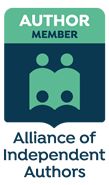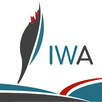|
With my manuscript nearly complete, this past fall I started to look around for cover designers. There are many out there and it can be really hard to decide who to hire. Here are some guidelines based on my experience. How to prepare Before you reach out to talk to any designers, prepare the following:
I wanted a minimalist, simple design for my book. There were two things that made me choose the designer I did for Sābanto. Ana is a Canadian entrepreneur from Vancouver with an illustrator available on site. When reviewing her previous work I was confident that the minimalist design I was looking for would be attainable. We discussed ideas and everything was set into motion. Feedback I’ve joined a lot of author communities during my journey through publishing, and once I started receiving the first drafts of the design, I decided to share it for some feedback. Here’s what I got:
I decided not to be a sheep when it came to cover design, and it could turn out to be a mistake on my part. I’m prepared to take the blame, but they always say that a writer needs to find their own voice and be unique, so as to stand out from the crowd. Why not treat cover design the same way? Whenever I go back to the feedback I received, it reminds me of an image I saw not too long ago. A bookstore was re-arranging books to increase sales, and they’d put all the books with covers featuring shirtless men on display. They called these “Where is my shirt?” books. It makes me wonder how the readers of these books know which ones they’ve already read, because they all look so similar. In a sea of dystopian fiction books with red and black covers, I hope my light-covered book will stand out. As the meme says: “In a world full of princesses, dare to be Batman!” In conclusion, a quick note to readers: don’t judge a book by its cover. Or, maybe do, and grab the one that stands out.
0 Comments
Photo by srinivas bandari on Unsplash I think I touched on this a bit in previous posts. Self-publishing definitely requires more effort than working with a publisher. While traditional publishers will provide you with an editor of their choosing, a self-published author has to do the work of finding an editor they connect with and can work well together with. The traditional publisher already has a contract with a book cover designer. Self-published authors have to research cover designers themselves and choose one they like best based on their past work. Once you are ready to self-publish, you will also need to navigate the different platforms available to you. How will you submit the book to print? Will you use a local print shop, or use a print-on-demand giant such as IngramSpark? How about Amazon, Google Books, Kobo, and so on? You need to worry about formats, forms to fill in, contracts, quality of the print, etc. If something goes wrong, how much time and effort are you able to put in to resolve these issues with all these different vendors? Traditionally published authors don’t need to worry about how the books are printed. The publisher takes care of everything until the books are ready to be distributed to bookstores. Once the book is published, the work doesn’t stop there. Self-published authors must also learn how to market their book to the public. The author must build their reader base and hold their audience’s interest while working on new future publications. Both types of authors, traditionally and self-published, will give readings, attend book fairs, and visit bookstores and libraries. Ready for a challenge? If so, self-publishing may be for you. No matter which road you take, the first book will be the hardest to write and publish. Once you get to know how the industry works, and how to navigate the publishing labyrinth, publishing a second book will be easier. Photo by Ewa Romanowicz Whatever your choice, you’ll still spend a lot of time editing your manuscript to make it the best it could possibly be. You’ll be working with the editor and spending countless hours re-reading your work. Here are some highlights on how you’ll spend your time in traditional vs self-publishing: If you choose to go the route of traditional publishing, you’ll consume an extensive amount of time finding a publisher. It’s your job as an author to find publishers that are interested in you, your genre, and your book. Due to the large number of submissions the publishers get, they require detailed applications with very specific guidelines. Those who fail to follow the requirements are automatically rejected. Some publishers will take months to reply to your submission regardless of whether or not they’re interested. First time authors should expect a lot of rejections, so get ready for them, but keep moving forward and keep trying. You will find a publisher that will eventually help you to get your book out. With self-publishing you are on a straight line to publishing. You do not need to look for a publisher since you are the publisher. Once your manuscript is complete, you can go straight to hiring an editor and skip the searching stage. There is, however, a catch. The majority of first time authors have no clue how to publish their own book, so you’ll have to spend time doing research, listening to podcasts, following other self-published authors, and researching service providers such as editors, designers, marketers. Regardless of which path you take, publishing your second book will be much quicker. There will be less time wasted finding a publisher or service provider. The experience you gained publishing the first book will have paid off. Some writers think that self-publishing will mean having to work harder to make their book known to the public. I think there is some misconception here, because traditional publishers can’t do much without the writer's involvement. They’ll send your book to local bookstores, and they might put out some press releases. In the end, however, it’s you, the author, who will gain publicity by attending the author’s readings and signings. It will be you attending the conferences and praising your book. You’ll spend a lot of time on this, and unless you are an established author, you may not be able to afford to say no to these events. Photo by Renee Fisher on Unsplash There is no right or wrong choice when it comes to publishing a book. Some prefer to publish with a publisher, others like myself choose to self-publish. Both roads, however, have some pros and cons, and new authors need to choose what works best for them. There is a misconception that self-published authors produce a lower value product which I do not agree with. Self-publishing can produce quality books if the authors follow all the publishing steps a traditional publisher would. In this series of blogs, I will try to highlight some differences that I have learned. We will start off talking about money. Money The first thing a new author needs to consider when selecting their path on the publishing journey is money. How much money do you have to publish? The traditional publisher knows the market and what books they would like to publish, and how many they expect to sell. These are the criteria they’ll use to determine whether they will pick your book and publish it. The publisher is taking the risk here and not the author. Once they select your book, they may or may not pay you an amount for the manuscript in advance. If they consider your book a risk, they will want to invest little, hoping the market is better than they thought it would be. Small publishers also might not have the required funds to give you an advance. Once your book is selected from hundreds of submissions, the publisher is the one who will pay for an editor, typesetter and cover designer. Once the publisher recuperates their investment in your book, that is when you will start seeing money. How much money you receive, and when, will be part of your contract with your publisher, so read it carefully. When self-publishing, especially if it is your first book, you will be navigating blindly through the genre of your book and your intended audience. You do not have the vast knowledge that a professional publisher has about what sells, why, and in what numbers. It is you who takes the risk. In order to publish quality content, you need to pay up front for your editor, typesetter and cover design before you see any money. With self-publishing, however, you cut the middleman, the publisher. Once you put your book up for sale, you see information almost in real time on how many books you’re selling and how much profit you’re receiving. Your cut per book will also be higher than what a traditional publisher usually offers. Some websites like Amazon will start paying you within three months regardless of how many books were sold. What if your book is unsuccessful? With a traditional publisher, the publisher is the one who reports the loss on the investment. As an author, you get to keep your advance and then the book dies its natural death. You may be able to get the publishing rights back and continue with the book as self-published, but this will depend on your contract. With self-publishing, it is you, the author, who invested the money. If the book doesn’t do well, you may not get your money back, but the book will still be available for sale as an eBook and as Print on Demand. Eventually, in years to come, you might still make your money back or even profit. |




 RSS Feed
RSS Feed



